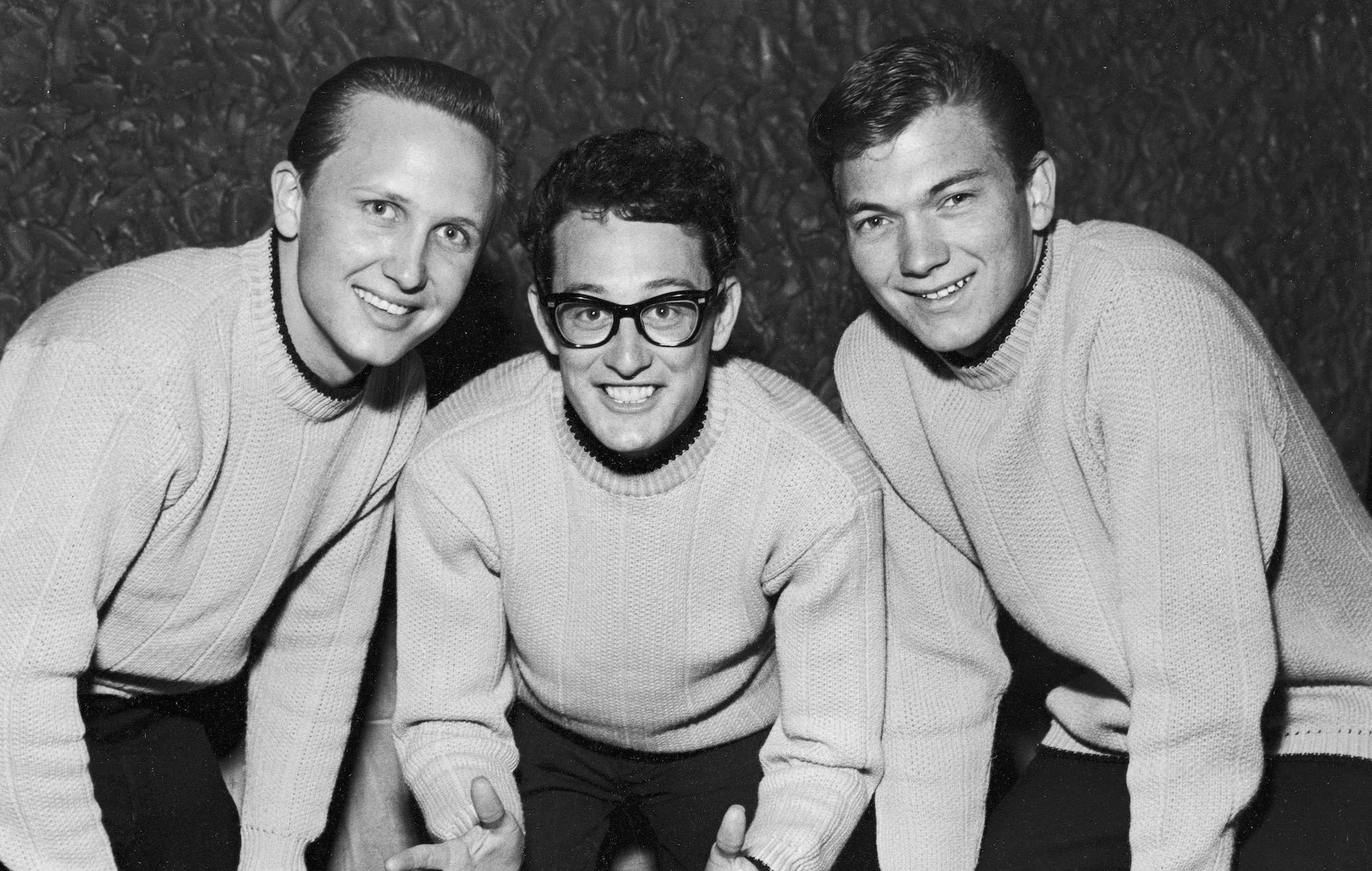
Buddy Holly and the Crickets were a legendary rock and roll band from the 1950s that left an indelible mark on the music industry. Led by the talented singer-songwriter Buddy Holly, the Crickets revolutionized the sound of rock and roll and paved the way for future generations of musicians.
In this article, we will delve into 19 fascinating facts about Buddy Holly and the Crickets that will not only shed light on their remarkable career but also provide a deeper understanding of their influence on popular music. From their humble beginnings in Lubbock, Texas to their meteoric rise to fame, these facts will showcase the remarkable talent and impact of this iconic band.
Key Takeaways:
- Buddy Holly and The Crickets were rock and roll trailblazers whose catchy melodies and unique vocal style left a lasting impact on music history, inspiring future generations of musicians.
- Their timeless music, innovative techniques, and iconic style continue to captivate audiences, showcasing the enduring influence of Buddy Holly and The Crickets on the music industry.
Buddy Holly and The Crickets revolutionized rock and roll.
With their unique sound and infectious energy, Buddy Holly and The Crickets made an indelible mark on the music industry. Their contributions to rock and roll continue to resonate even decades later.
Buddy Holly’s real name was Charles Hardin Holley.
Born on September 7, 1936, in Lubbock, Texas, Buddy Holly was a talented singer, songwriter, and musician. He achieved widespread fame before his tragic death at the age of 22 in a plane crash.
The Crickets were originally called The Two Tones.
Formed in 1956, the band initially consisted of Buddy Holly, Jerry Allison, and Joe B. Mauldin. They later changed their name to The Crickets as a tribute to their musical inspiration, the insect of the same name.
Their breakthrough hit was “That’ll Be The Day.”
Released in 1957, “That’ll Be The Day” became a chart-topping success and solidified Buddy Holly and The Crickets’ place in music history. The song’s catchy melody and relatable lyrics struck a chord with audiences worldwide.
Buddy Holly was one of the first musicians to utilize overdubbing.
During recording sessions, Buddy Holly experimented with overdubbing, a technique where multiple layers of sound are recorded on top of each other. This innovative approach allowed him to create a more layered and textured sound in his music.
The Crickets were known for their distinctive “hiccup” style of singing.
One of Buddy Holly and The Crickets’ trademarks was their distinctive vocal style, often characterized by a “hiccup” effect. This unique singing technique added a playful and memorable element to their songs.
They had several other hit songs, including “Peggy Sue” and “Oh Boy!”
Besides “That’ll Be The Day,” Buddy Holly and The Crickets had a string of successful singles. Songs like “Peggy Sue” and “Oh Boy!” became fan favorites and helped solidify their status as influential musicians.
The Crickets were inducted into the Rock and Roll Hall of Fame.
In recognition of their significant contributions to the music industry, The Crickets were inducted into the Rock and Roll Hall of Fame in 2012, solidifying their place in rock and roll history.
Buddy Holly’s glasses became an iconic symbol.
Buddy Holly’s trademark thick-rimmed glasses became a recognizable symbol of his unique style. They have since become synonymous with the rock and roll era and are often seen as an iconic fashion statement.
Buddy Holly’s influence extended to future generations of musicians.
Many notable musicians, including The Beatles and Bob Dylan, have cited Buddy Holly as a major influence on their music. His innovative songwriting and captivating performances continue to inspire artists to this day.
The Crickets’ music is considered a precursor to the British Invasion.
The Crickets’ rock and roll sound laid the groundwork for the British Invasion of the 1960s, which saw the rise of bands like The Beatles and The Rolling Stones. Their influence on the music scene cannot be overstated.
They appeared on “The Ed Sullivan Show.”
Buddy Holly and The Crickets had the opportunity to perform on the popular television show “The Ed Sullivan Show” in Their energetic performance showcased their talent and helped introduce them to a wider audience.
Buddy Holly’s tragic death had a profound impact on the music industry.
The untimely death of Buddy Holly in 1959 was a devastating loss for the music world. His legacy, however, continues to live on through his timeless music and the influence he had on future generations of musicians.
The Crickets’ music continues to be beloved by fans worldwide.
Even decades after their heyday, the music of Buddy Holly and The Crickets remains popular and cherished by fans around the globe. Their timeless songs continue to be celebrated and enjoyed by new generations.
Their music showcased a blend of rock and roll, country, and R&B influences.
Buddy Holly and The Crickets’ music incorporated various musical genres, including rock and roll, country, and R&B. This unique blend of styles contributed to their distinct sound and set them apart from other artists of their time.
Buddy Holly was posthumously awarded a Lifetime Achievement Grammy.
In 1996, Buddy Holly was honored with a posthumous Lifetime Achievement Grammy Award, recognizing his significant impact on the music industry and his enduring legacy as a pioneering musician.
The Crickets’ influence can be heard in countless cover versions of their songs.
Over the years, numerous artists have covered songs originally performed by Buddy Holly and The Crickets. Their enduring appeal and influence can be heard in these reinterpretations, further cementing their place in musical history.
Buddy Holly and The Crickets’ music continues to inspire and captivate audiences today.
The legacy of Buddy Holly and The Crickets lives on through their timeless music. Their innovative approach to rock and roll, memorable melodies, and energetic performances continue to resonate with listeners of all ages.
Buddy Holly and The Crickets left an indelible mark on the music industry.
With their groundbreaking contributions to rock and roll, Buddy Holly and The Crickets will forever be remembered as pioneers and trailblazers. Their influence on music and popular culture remains significant and continues to be celebrated.
Conclusion
In conclusion, Buddy Holly and The Crickets left an indelible mark on the music industry with their unique sound and groundbreaking contributions. From their humble beginnings in Lubbock, Texas to their iconic performances at the Apollo Theater, Buddy Holly and The Crickets captivated audiences around the world. Their influence can still be felt today, as their music continues to inspire new generations of musicians. Whether it’s the timeless appeal of songs like “That’ll Be the Day” or the innovative use of studio techniques, Buddy Holly and The Crickets will forever be regarded as pioneers in the realm of rock and roll. Their legacy lives on, reminding us of the power of music to bring people together and shape the cultural landscape.
FAQs
1. Who were the original members of The Crickets?
The original members of The Crickets were Buddy Holly (vocals, guitar), Niki Sullivan (guitar), Joe B. Mauldin (bass), and Jerry Allison (drums).
2. What were some of Buddy Holly and The Crickets’ biggest hits?
Some of Buddy Holly and The Crickets’ biggest hits include “That’ll Be the Day,” “Peggy Sue,” “Oh Boy!” and “Not Fade Away.
3. What was the significance of Buddy Holly and The Crickets’ music?
Buddy Holly and The Crickets played a crucial role in shaping the early rock and roll era. Their fusion of country, rockabilly, and rhythm and blues created a distinctive sound that influenced countless musicians to come.
4. What impact did Buddy Holly and The Crickets have on the music industry?
Buddy Holly and The Crickets introduced innovative techniques in the recording studio, such as overdubbing and double-tracking, which became standard practices in the industry. Their music also paved the way for future generations of rock musicians.
5. What happened to Buddy Holly and The Crickets?
Tragically, Buddy Holly, Ritchie Valens, and J.P. The Big Bopper” Richardson were killed in a plane crash on February 3, 1959, known as “The Day the Music Died.” The Crickets continued to perform and record music, but without Holly, their popularity slowly declined.
6. What is Buddy Holly and The Crickets’ lasting legacy?
Buddy Holly and The Crickets left a lasting legacy with their innovative music and influential contributions to rock and roll. Their timeless songs continue to resonate with audiences today, and their pioneering spirit lives on in the evolution of popular music.
If you're fascinated by rock and roll history, don't miss our articles on the prestigious Rock and Roll Hall of Fame induction ceremony, lively rockabilly festivities at Viva Las Vegas Rockabilly Weekend, and legendary American rock band Grateful Dead. Dive into captivating stories behind music's biggest names and events that shaped generations.
Was this page helpful?
Our commitment to delivering trustworthy and engaging content is at the heart of what we do. Each fact on our site is contributed by real users like you, bringing a wealth of diverse insights and information. To ensure the highest standards of accuracy and reliability, our dedicated editors meticulously review each submission. This process guarantees that the facts we share are not only fascinating but also credible. Trust in our commitment to quality and authenticity as you explore and learn with us.


